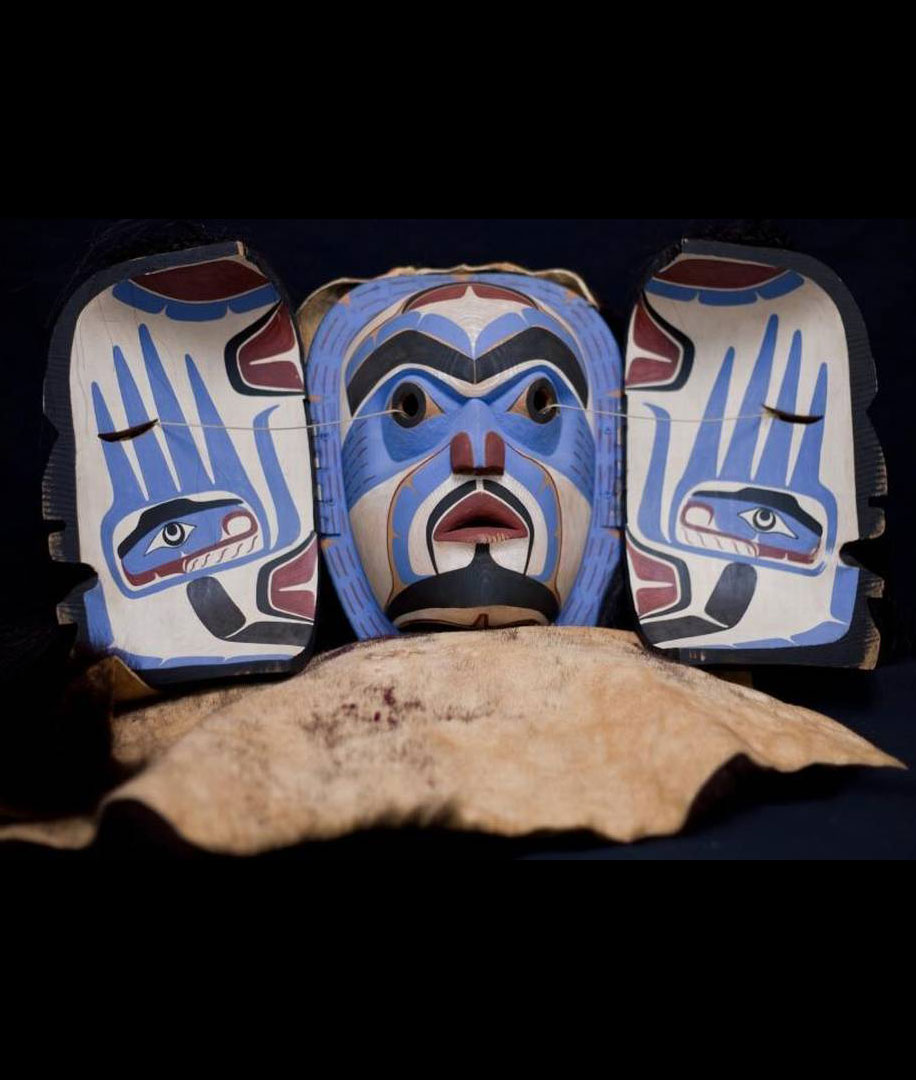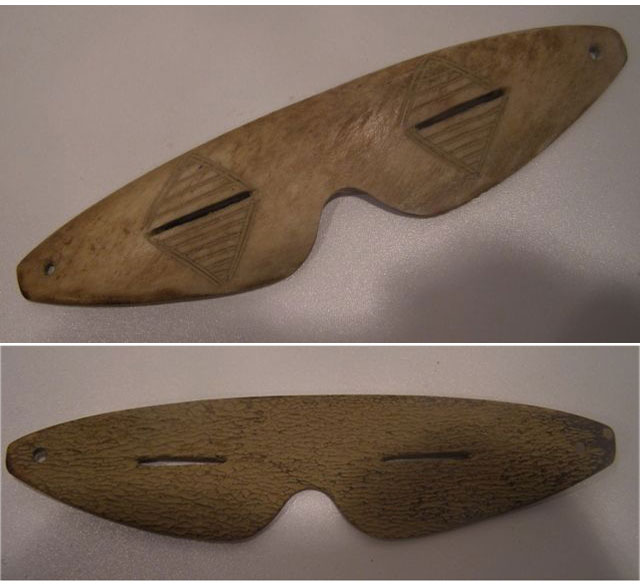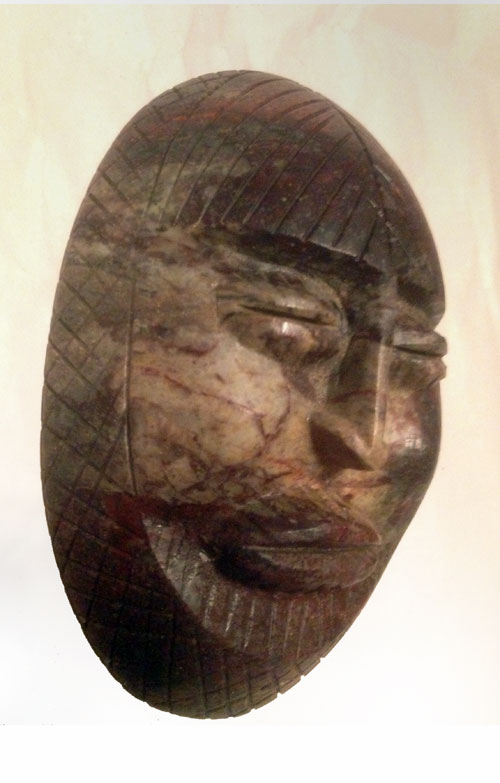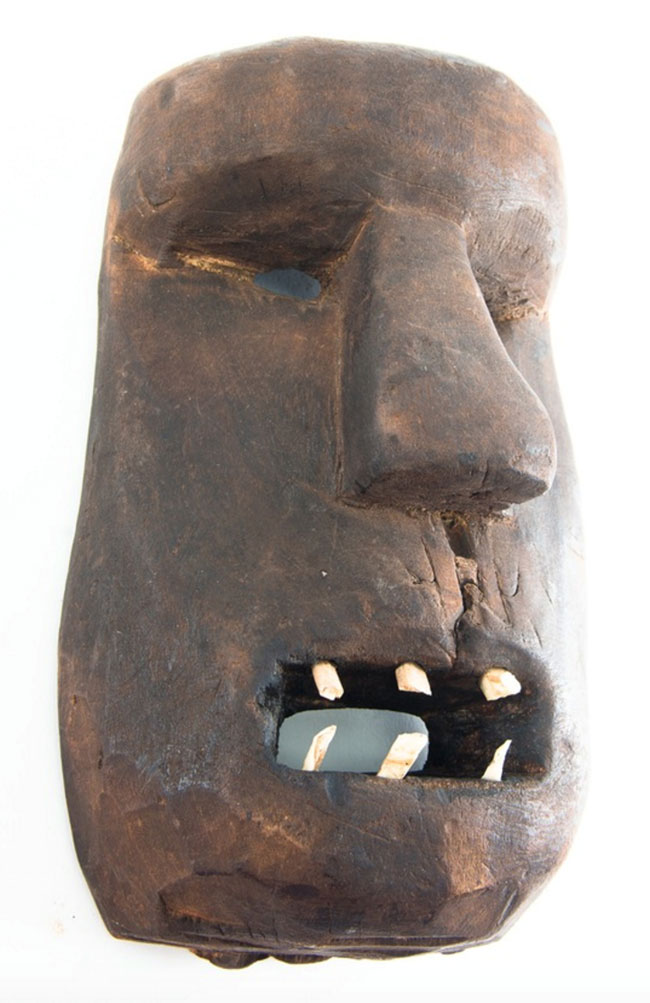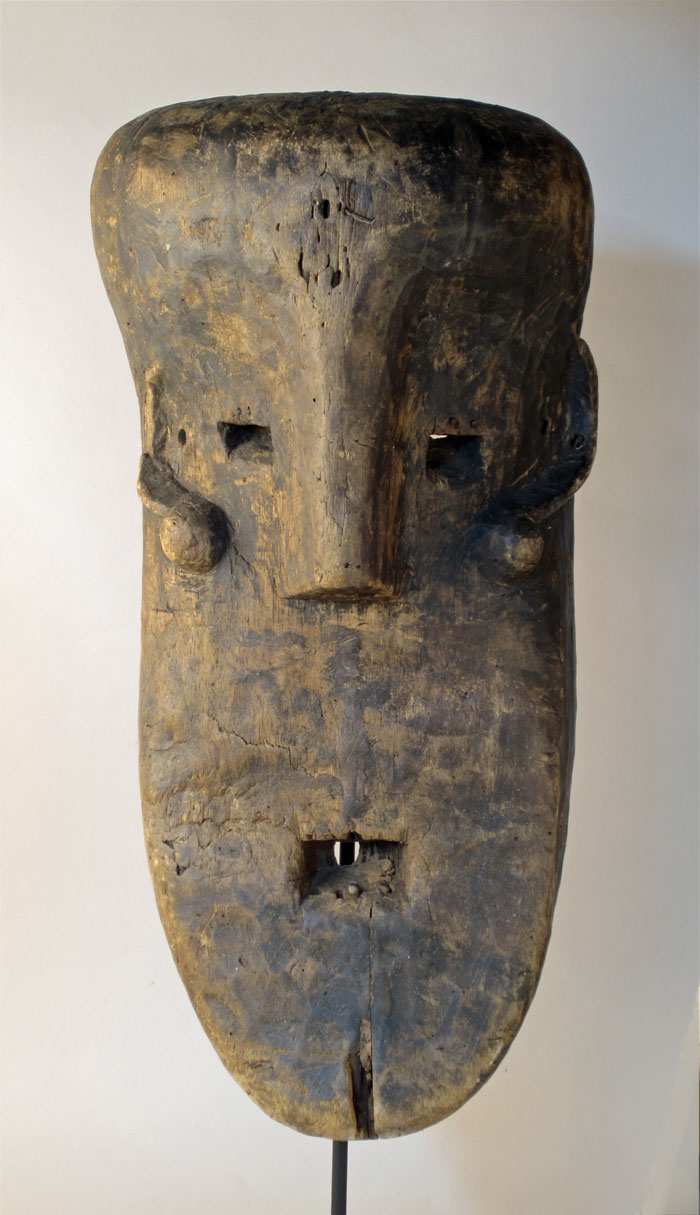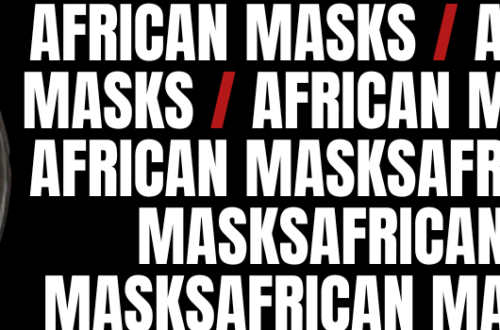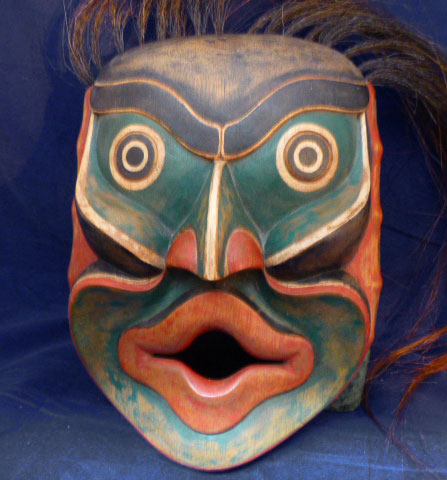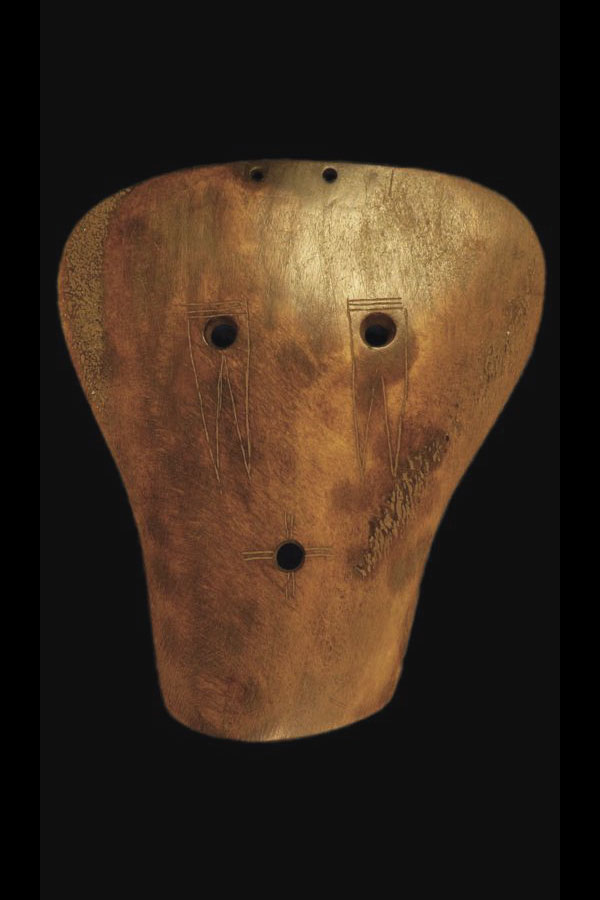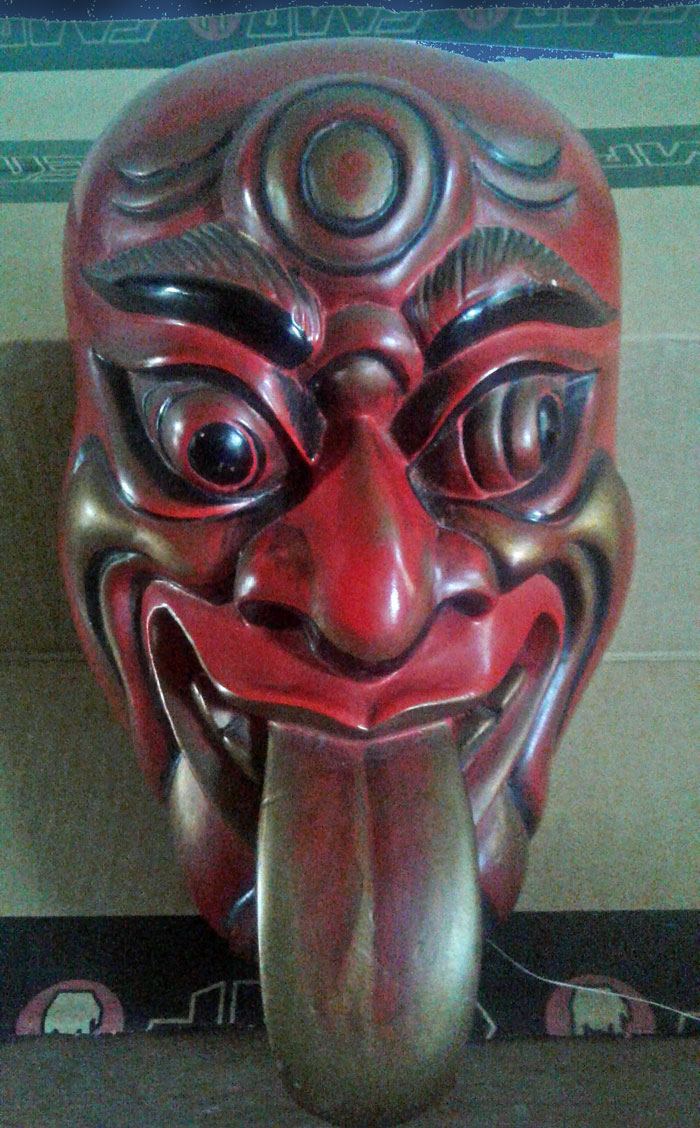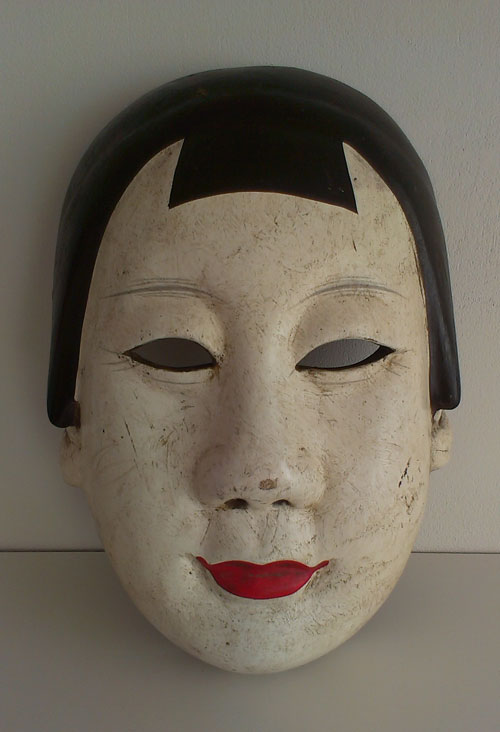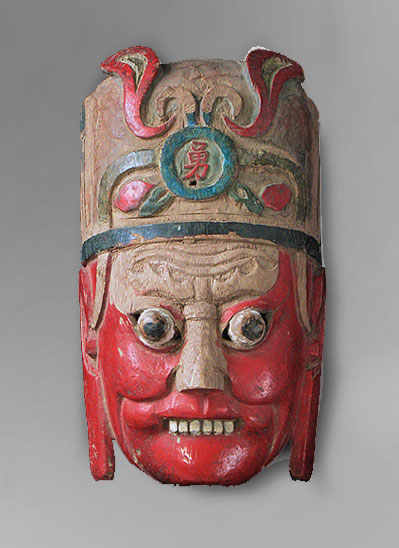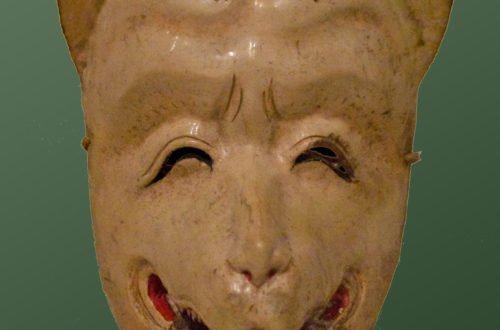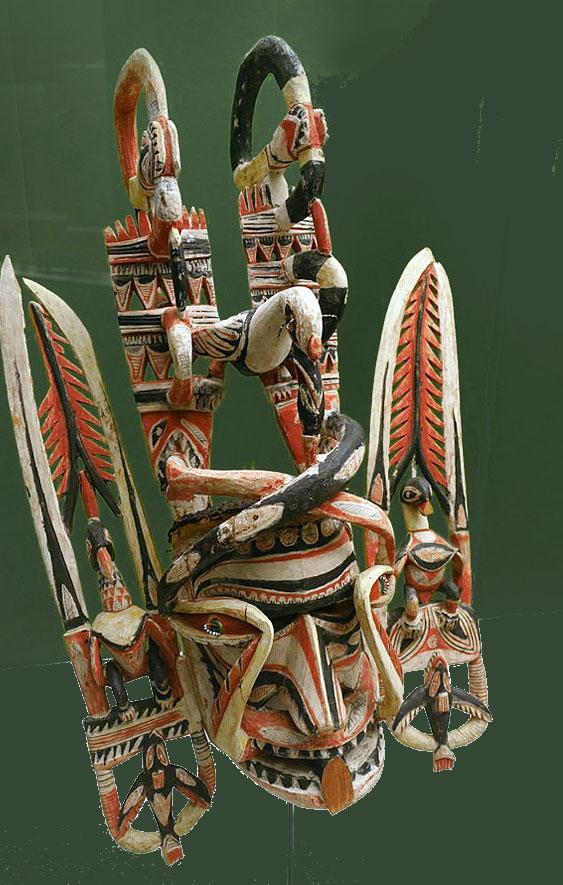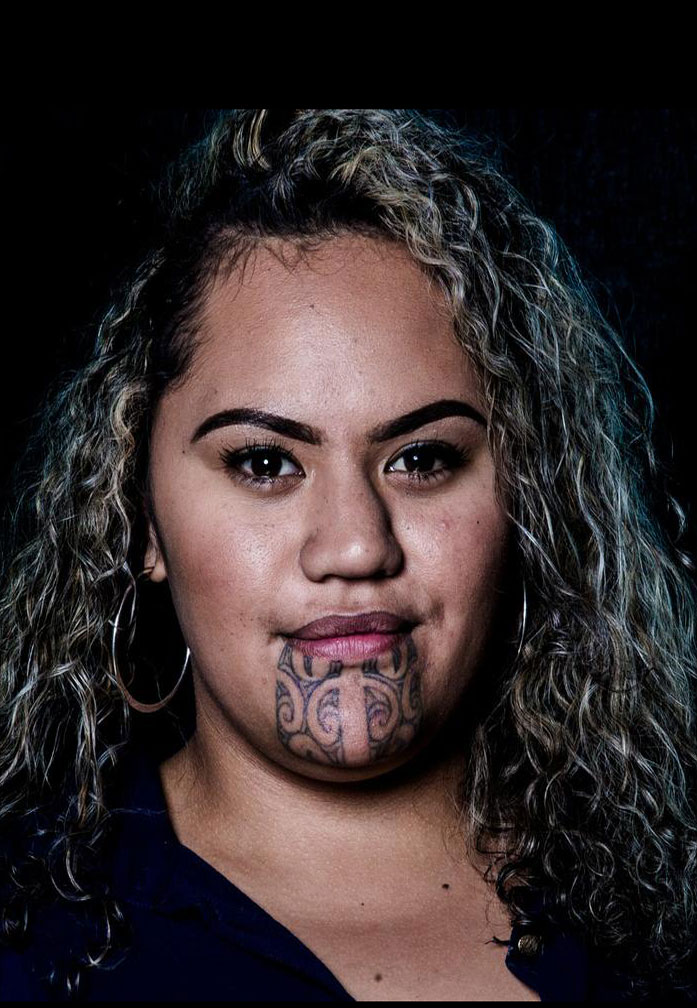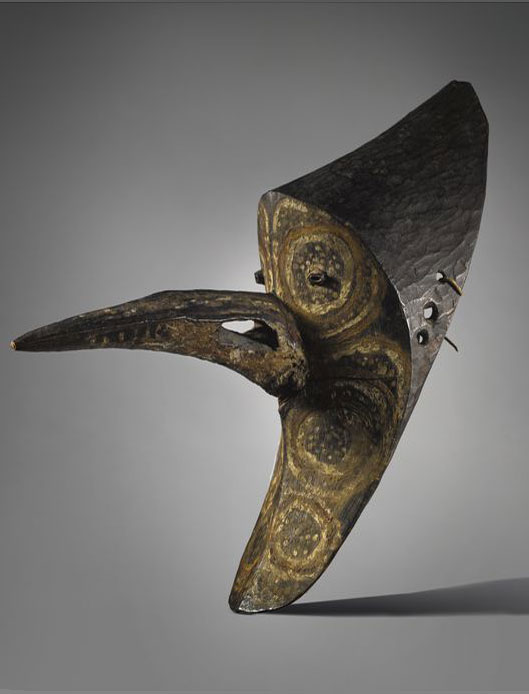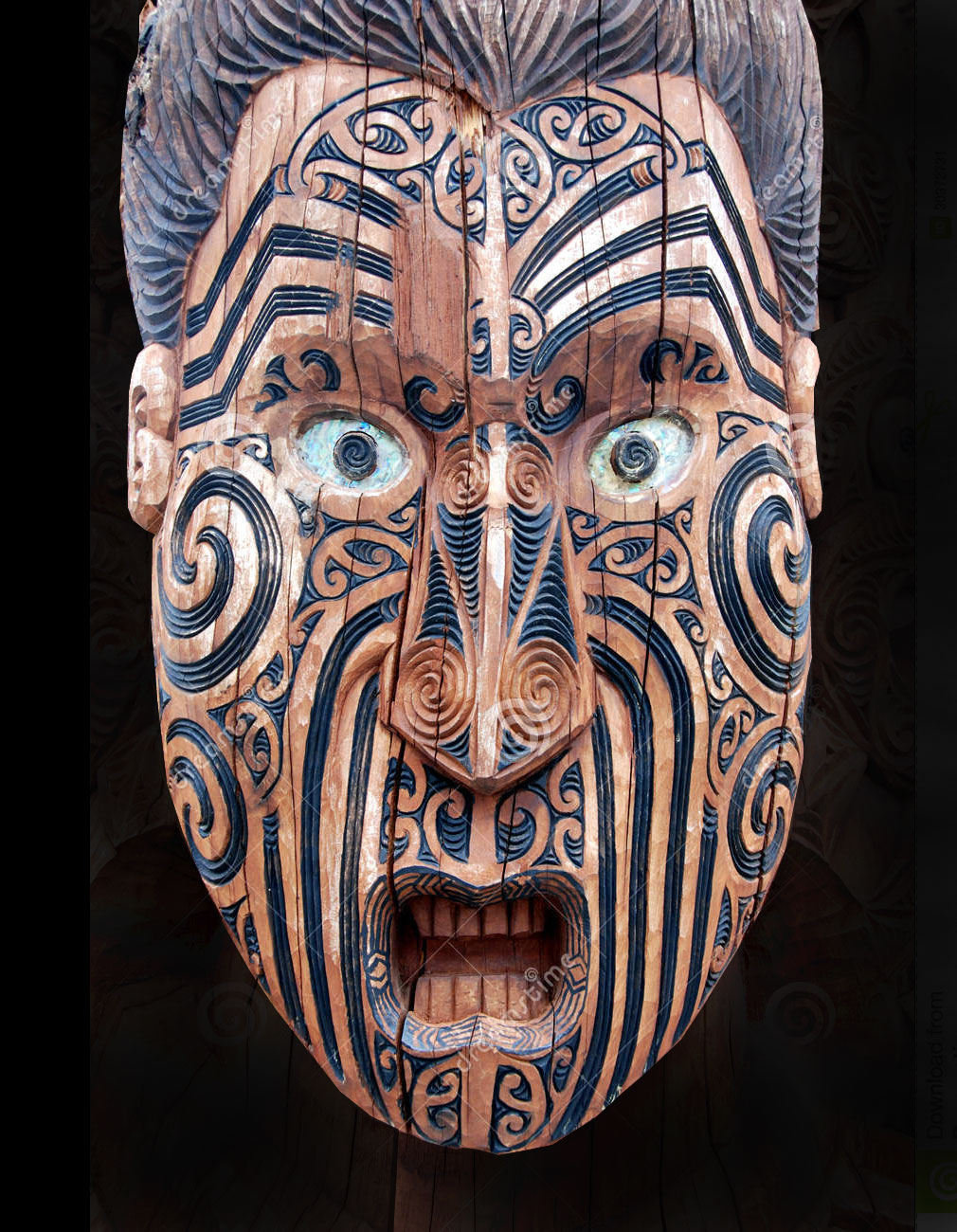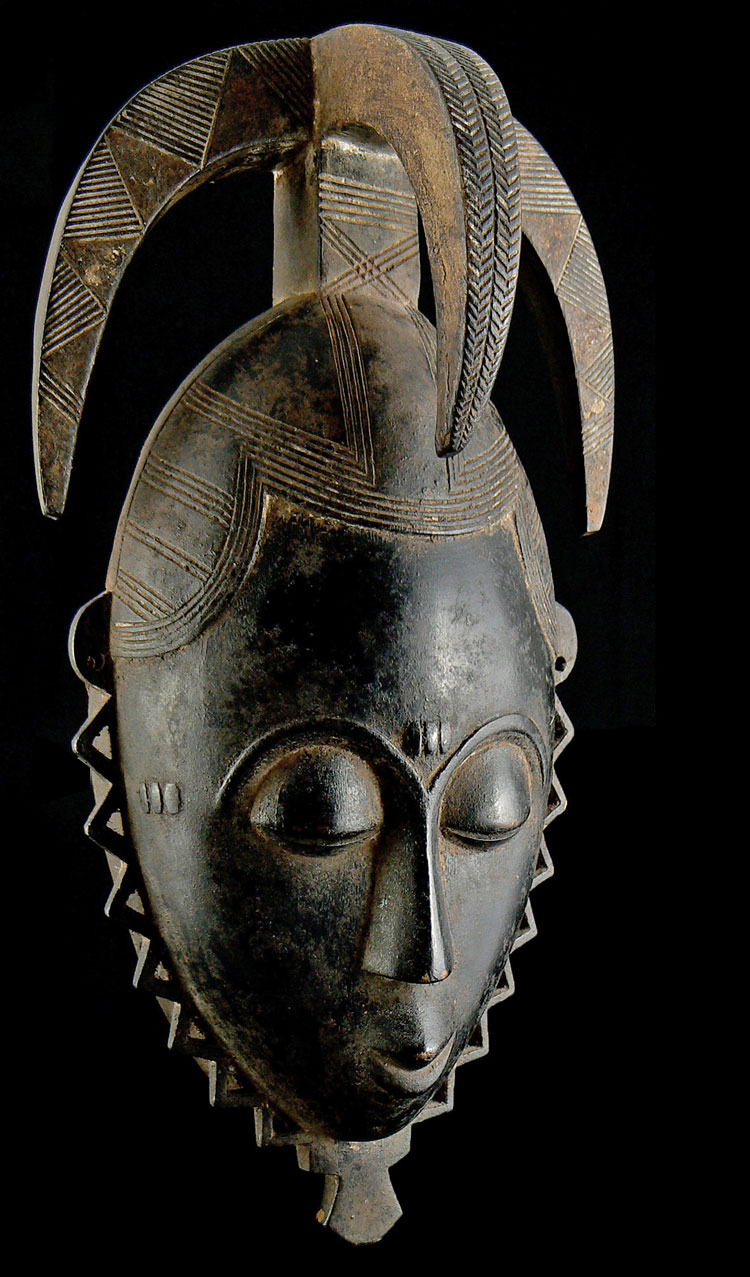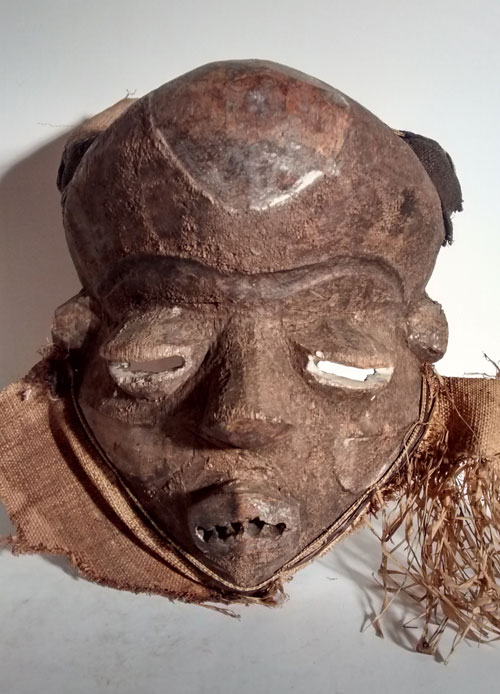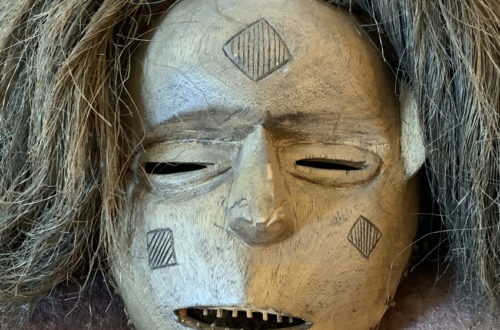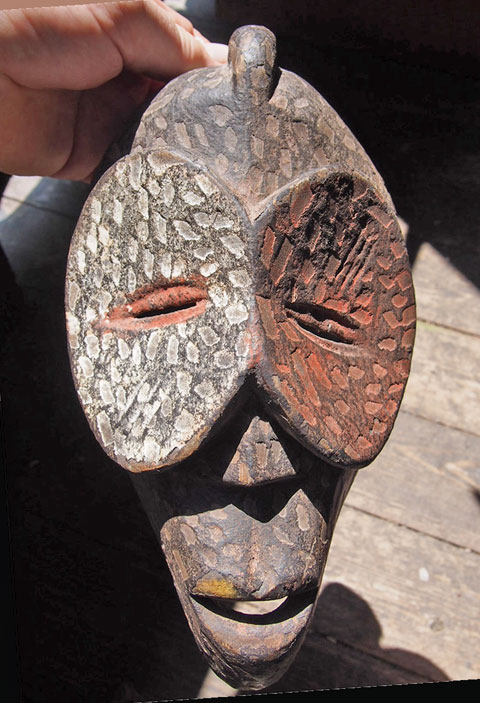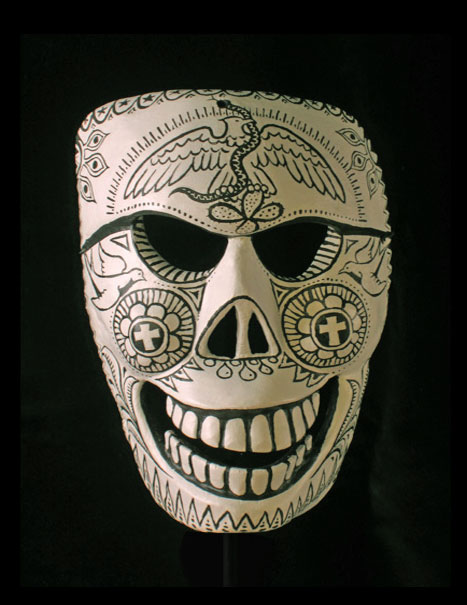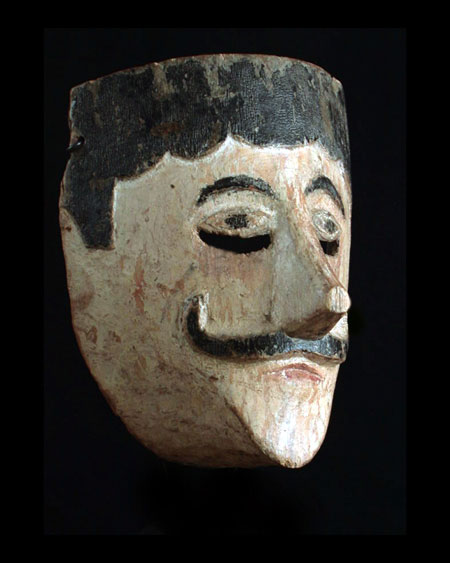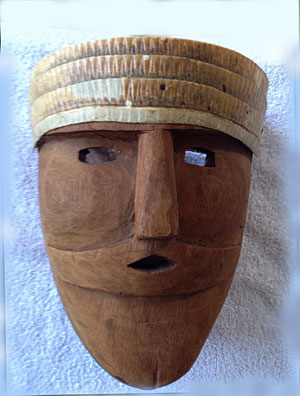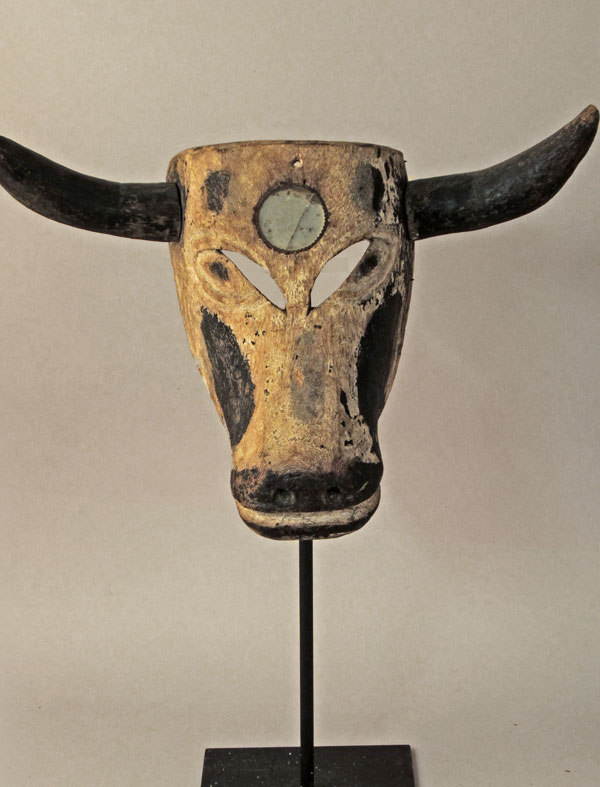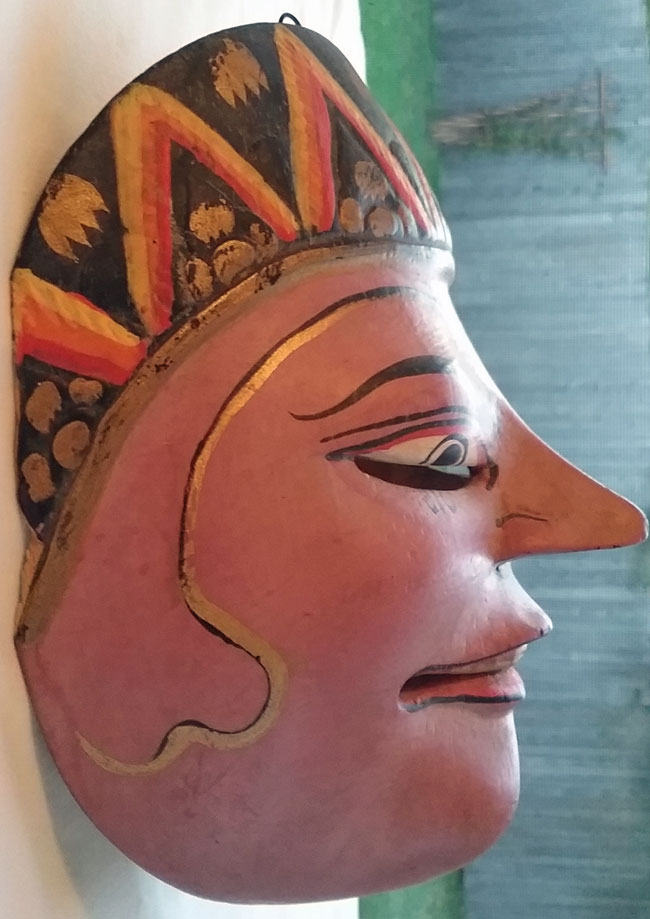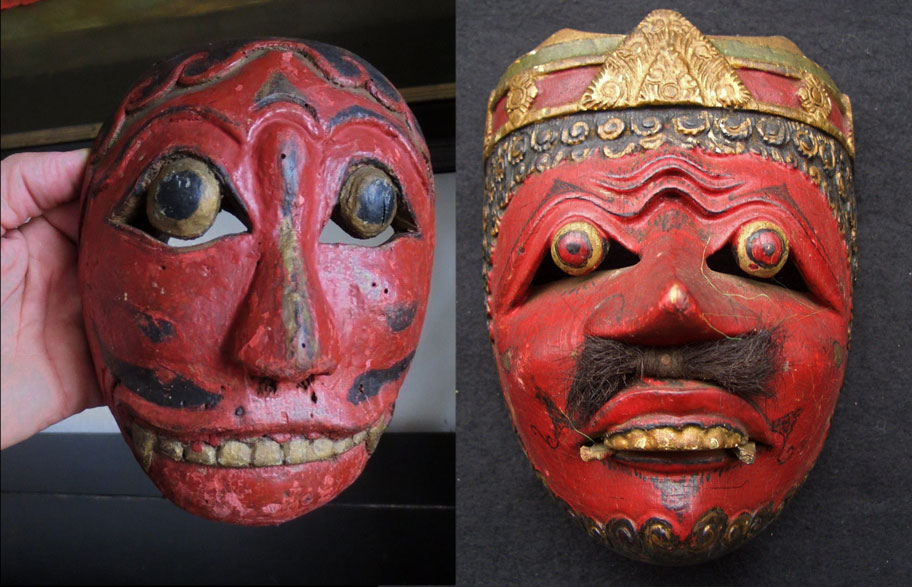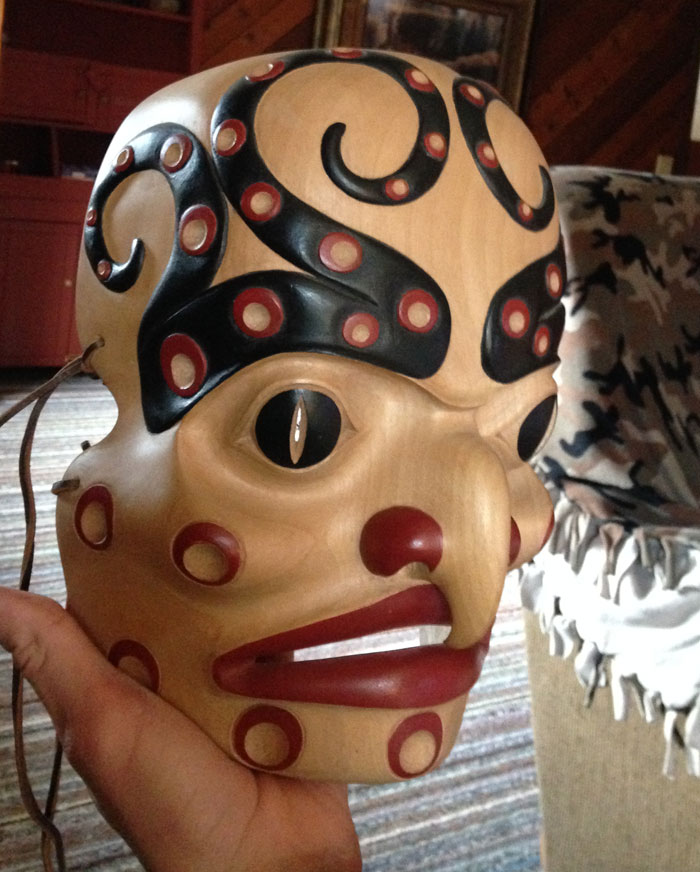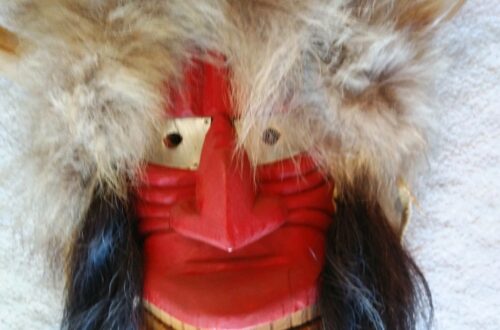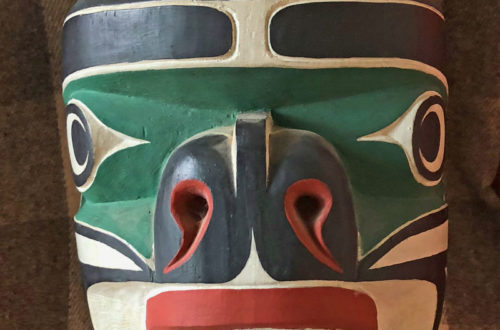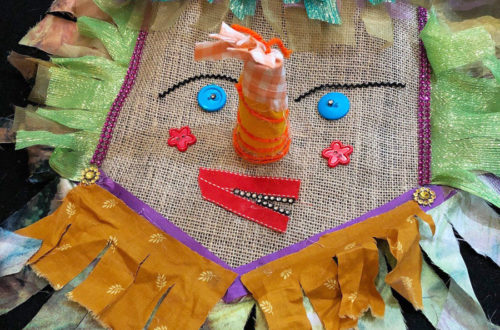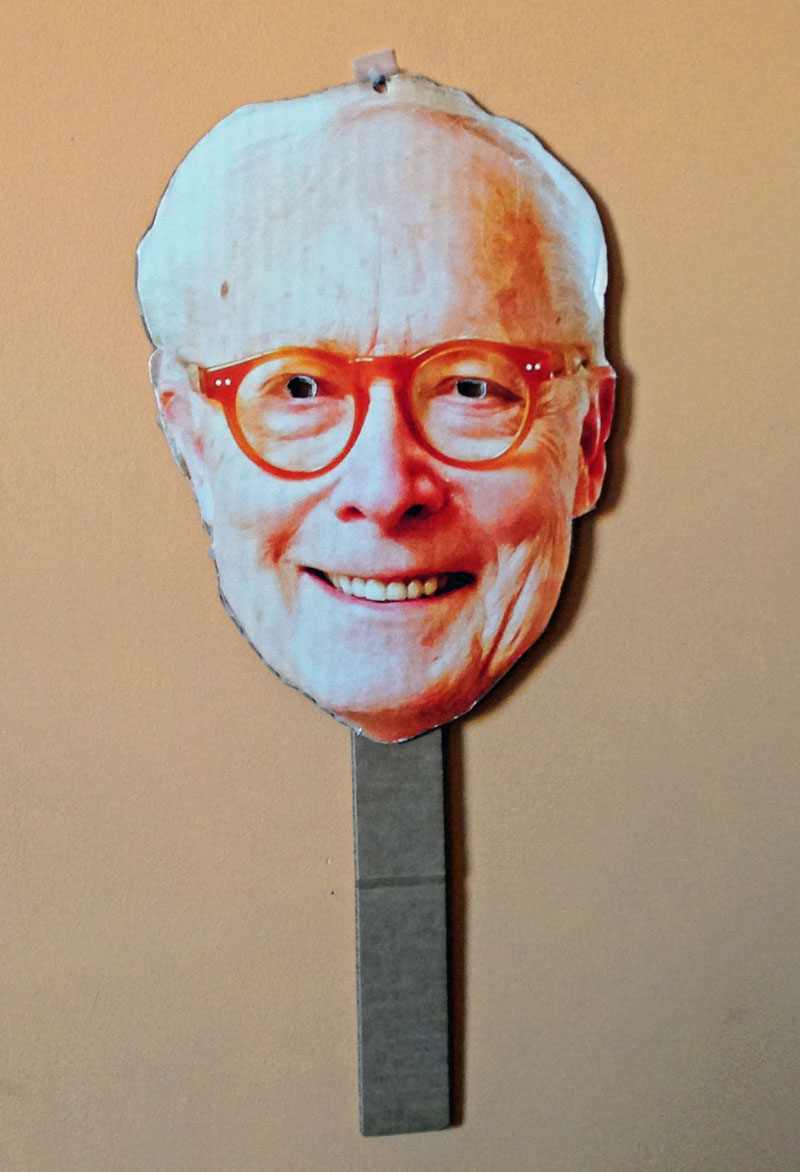Tsonokwa transformation masks made by artist Scott Jensen are part of the Whatcom Museum education collection. The story of Tsonokwa (Dzunuk’wa, Tsonoqua) or Wild Woman of the Woods, is a Northwest Coast Native legend about a mythical, dark-haired, large female being who captures children and carries them home in a basket to eventually eat them. Parents used the Tsonokwa story as a warning to keep their children safe and discourage them from venturing too far into the forest “or Tsonokwa might get you and eat you.” In the story, the children usually manage to outwit Tsonokwa and escape from her captivity. Many Northwest Coast native artists have created cedar masks…
-
-
Younger buyers and five figure sales mark “turning point”
This Ivory Coast Ligbi mask was one of the highlight sales at the recent edition of Tribal Art London. The anthropomorphic face mask, measuring 30cm (12in) tall, is carved in wood with pigments, cloth and fibers. It was offered with a good provenance for a price in the region of $16,000 by first-time exhibitor Mark Eglinton, who is based in New York. Tribal Art London, which took place from September 6-9 at the Mall Galleries, featured 23 exhibitors. It was the largest event to date for the fair which is now 10 years old. It is organized by Bryan Reeves of Tribal Gathering London who called this a “turning point”.…
-
Eskimo artifacts: fantasy in a cold climate
This is part of an article by Susan More in the Sep 29, 2017 Financial Times. Both masks are Yup’ik and, if you found one, it better be a recently-made fake or you surely wouldn’t be able to afford it. These are more Surreal than we are!, an indignant André Breton apparently exclaimed when he first encountered a Yup’ik ceremonial mask in New York. It is little wonder that the Surrealists were fascinated by these colored, strikingly adorned artifacts since they are among the most inventive, expressive and fantastical of all tribal arts. We threw ourselves into the poetic atmosphere of the Eskimo masks. We breathe in Alaska, we dream…
-
Decorative wall hanging
Q: Could you please tell me more about this mask, where it’s from and if it has any value? Ronald, 1228 A: I normally publish real masks on the Mask Man blog, not decorative art. But I thought this might be a copy of a Japanese Bugaku mask. Wrong! Only places like India, Nepal, China and Indonesia do masks with their tongue hanging out. And this is obviously not a real mask, but something nobody could wear. It can only be art for the wall. One of the problems with non-masks is that they often add and subtract features that come from other cultures. This is confusing and something most…
-
Matua mask from Oceania
Northeast of Papua New Guinea is the much smaller island of New Ireland. Though small in size and population, the Melanesian people who live there have always had a rich tradition of masquerade. After the Cook explorations in the middle 19th century, a few of their masks began to show up in Europe, and like so many of the West African masks (the Yaure-Baule you just saw), those few Oceanic masks also had an effect on European modern art. If you go to the “Oceania” category in our archive you can see another much different mask from New Ireland. They are both very artistic and complex, and unfortunately, quite rare.…
-
Beautiful Yaure mask from Africa
This is such great art I know you will enjoy seeing it. Imagine the impact pieces like this had on European painters and sculptures in the late 19th century! The following copy from a tribal art dealer’s ad is interesting… These sculptural masks have often been identified as Yaure, a less populous group who depending on their proximity to their neighbors either speak Baule or Mande. Both Yaure and Baule art, culture and masquerade performances are closely related. The Yaure masks have similar horn like projections carved with patterns and oval heart shaped faces. The scalloped hairline and elaborately carved patterns above it, representing the coiffure, are also typical of…
-
Day of the Dead masks from Mexico
Day of the Dead celebrations will soon kick off in Mexico, with millions of revelers taking to the streets to honor their lost loved ones. People often construct their own private altars, where they honor the dead with a number of different gifts. Sugar skulls and marigolds are among the offerings given up, as well as the favorite food and drinks of the departed. Skull masks are both worn and displayed. As the years have gone by, the designs have become even more intricate and extravagant. Not long ago, the first ever Day of the Dead parade took place in Mexico’s capital and it’s believed that this addition to the…
-
Javanese traditional dance mask
Q: I purchased a mask at an antique dealer estate sale for $5 because I thought it was interesting. I think it may be Javanese. It’s made of thin wood and measures just under 7″ x 6″ wide. Would you know approximate age, origin & value? Kevin, 1223 A: As I say on the website, we do appraisals for a fee. I can tell your colorful lady is a character in one of the classic dance dramas of Java, and certainly worth more than you paid. The carving quality is good but the painting is below average. None the less, it will look good on the wall. I can’t tell…
-
Native American Octopus mask
Q: Got this mask from a neighbor who passed away. Was told a few names who it could be from the signature, done a lot of research and can’t confirm an artist nor tribe. Logan, 1224 A: Let’s not give up on this excellent, very original tribal mask from the Northwest Coast of Canada or the US called “Transforming Octopus.” Unfortunately I can’t read the carver’s signature. There are a number of skilled Indian carvers from this area and plenty of collectors from all over who could help us learn more about this mask. I hope some of them make a comment. Here’s my comment. NWC Indian carvers make some…
-
The Darth Vader mask for Halloween
We’re getting close to Halloween. It’s an important holiday in the USA– relying heavily on masquerade, and second only to Christmas in its popularity. My favorite Halloween mask is the Darth Vader helmet. You could call it a futuristic version of Samurai armor. Rather than talk about Star Wars or construction details, I will point out that this is also a great work of art. To use a term most of our viewers are familiar with, it could become an important ethnographic artifact. Bob, 1222 Save Save Save
